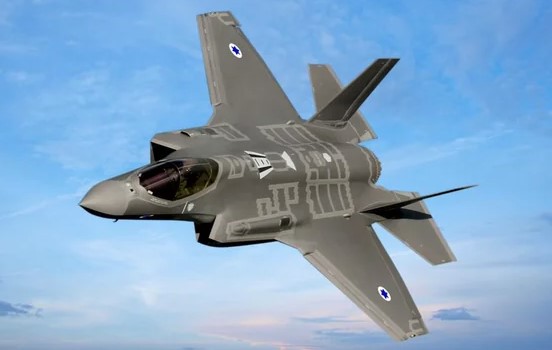In a major event that has drawn global attention, Iran has become the first country in the world to shoot down fifth-generation F-35 stealth fighter jets. These aircraft, considered among the most advanced and expensive warplanes ever built, were being used by the Israeli military in an early Friday morning attack against Iran.
First Time in History: Fifth-Gen Jets Shot Down
During this aggressive operation, several locations within Iran were targeted. The airstrikes led to the deaths of key military personnel, scientific experts, and innocent civilians, including women and children. However, in what is now being described as a historic moment in military defense, Iran’s air defense forces managed to detect, target, and destroy two F-35 fighter jets that had entered its airspace.
This successful action by Iran marks a global first — no other country until now has been able to bring down these stealth aircraft in active combat.
The F-35 is not an ordinary warplane. Built by the American aerospace company Lockheed Martin, it is one of the most modern fighter jets in the world. Its main feature is stealth — meaning it is designed to be almost invisible to radar. This allows it to enter enemy territory, carry out missions, and leave without being detected.
Israel, one of the few countries allowed to buy and use this aircraft, received its first F-35 jets around the year 2016. These were provided by the United States under a program called the Foreign Military Sales (FMS). Israel later developed its own version of the aircraft, known as the F-35I, which includes special changes to better suit its military needs.
The F-35I is equipped with powerful technology that helps it avoid enemy radars and perform deep missions with low chances of being shot down. Because of these features, it is seen as a major part of Israel’s air power.
That is why the downing of not one, but two of these jets by Iran is a very big deal. It shows that even the most advanced aircraft in the world are not impossible to stop.
Stealth Fighter F-35 Shot Down
In an official statement released by the Iranian Army’s Public Relations Office, it was confirmed that two F-35 fighter jets were successfully shot down during the early Friday attack. Along with the jets, several drones belonging to Israel were also destroyed.
Iran’s air defense system played a key role in this event. While the details of how exactly the jets were detected and targeted remain classified, the success suggests that Iran has made major improvements in its radar and missile technology. Taking down a fifth-generation stealth aircraft is not easy. These jets are specifically built to avoid detection by traditional radar systems.
Despite their advanced design and technology, the two Israeli jets could not escape Iran’s growing air defense network. The fact that they were shot down shows that Iran has possibly developed new methods or used advanced tracking systems that can spot and target stealth aircraft.
Historic Warning from Qom: Red Flag Over Mosque After F-35 Strikes Rock Iran
As of now, the fate of the pilots who were flying the F-35 jets remains unknown. Iranian officials have stated that an investigation is ongoing, and more information will be provided in the future.
This development has sent shockwaves through military experts worldwide. It challenges long-held beliefs about the F-35’s invincibility and raises questions about how future air battles might look in a world where stealth is no longer a guaranteed shield.
This moment has now entered the record books as the first time ever that a country has managed to shoot down fifth-generation stealth fighters during a live conflict. It also represents a serious setback for Israel’s military and its defense partners, especially considering the cost and strategic value of each F-35 jet.
